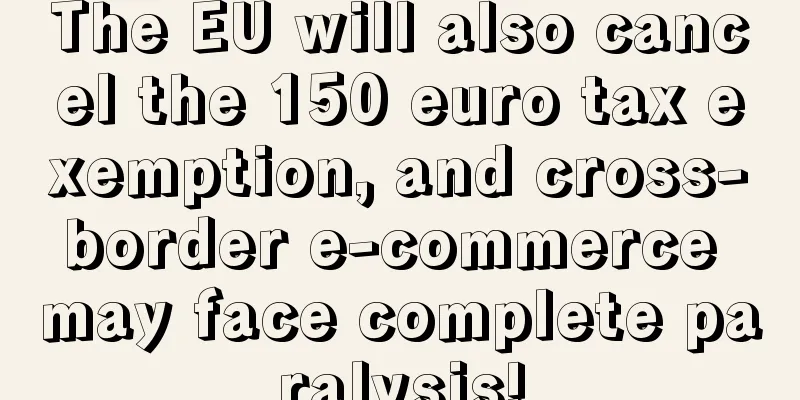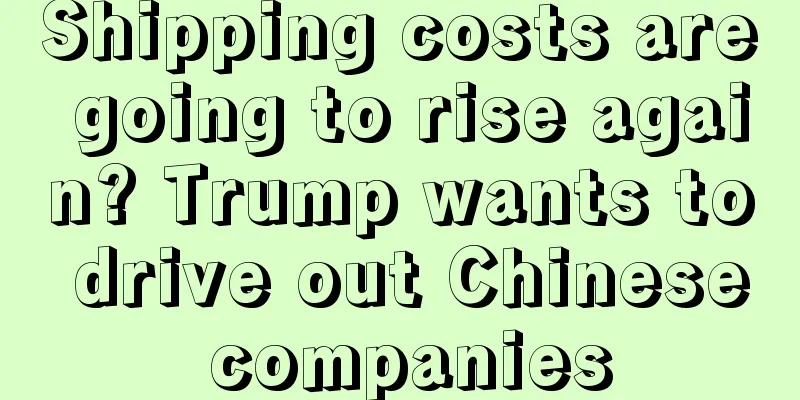The EU will also cancel the 150 euro tax exemption, and cross-border e-commerce may face complete paralysis!

|
The cross-border e-commerce industry has not yet recovered from the impact of the cancellation of the US T86 policy, and it has ushered in a new test! Recently, according to foreign media reports, the European Union is preparing to cancel the tax-free policy for goods below 150 euros (about 125 pounds) and is considering charging retailers a handling fee. If this policy is implemented, it will be like "adding insult to injury" for sellers who mainly operate in the European market! Once this change is implemented, it will significantly increase the compliance and logistics costs of cross-border e-commerce and squeeze sellers' profit margins. If sellers choose to make up for this cost by raising prices, it will directly weaken the competitiveness of Chinese products in the European market. Although the EU has not yet officially introduced this new regulation, the trend has become increasingly obvious, especially after the United States canceled the T86 policy, the EU has discussed this policy more frequently. EU plans to cancel 150 euro tax-free policy
Why was this decision made? The answer is simple - the influx of low-priced goods has put enormous pressure on EU customs, especially goods from Chinese e-commerce platforms. The EU believes that many of these goods are underpriced when entering the EU, thereby evading tariffs. This not only puts local retailers in an unfair competitive position, but also leads to the influx of a large number of substandard goods and even has an impact on the environment and climate. Data shows that in 2023, 2.3 billion duty-free goods entered the EU, of which about 91% came from China, and this figure is expected to soar to 4.6 billion in 2024.
First, sellers need to pay additional tariffs and value-added tax for these goods, resulting in higher logistics costs. At the same time, complicated customs clearance processes will extend the delivery time of goods, thereby affecting customer experience and order volume, and may even lead to an increase in return rates. For those sellers who have grown rapidly in the European market through the "distribution model", this is undoubtedly a heavy blow. On the one hand, sellers need to bear higher operating costs. On the other hand, extended logistics cycles and increased tariffs will significantly reduce their price competitiveness. Many cross-border e-commerce platforms, especially those with mid- and low-priced products, will face greater market pressure. How will cross-border e-commerce respond in the future?Optimize the supply chain: Find alternative low-cost logistics solutions and avoid over-reliance on duty-free channels. Adjust pricing strategy: In response to the upcoming increase in taxes and logistics costs, adjust pricing appropriately to maintain market competitiveness. Consider using overseas warehouses: Simplify customs clearance procedures and improve delivery efficiency by establishing warehouses locally or strengthening cooperation with local logistics. Strengthen compliance: Strengthen compliance checks on products to ensure they meet EU safety and quality standards and avoid returns or fines due to substandard products. Final Words As global cross-border e-commerce competition becomes increasingly fierce, every policy change may trigger huge market fluctuations. Sellers need to stay vigilant at all times, keep up with industry trends, and make corresponding adjustments. Only through refined operations, cost control and compliance strategies can we maintain competitiveness in an ever-changing market environment and not be dragged down by policies and market fluctuations. Therefore, friends in cross-border e-commerce, please make preparations quickly, seize new opportunities, and don’t be shocked by this wave of policy shocks. Continue to move forward steadily! Today's Share Amazon's latest brand authorization letter template |
>>: Affecting sales! Amazon AI is automatically optimizing listing information again
Recommend
How to set up keyword bidding most effectively? Five tips to teach you
Ad space is hard to come by and products cannot be...
Wish's second-quarter revenue fell 42%, with a net loss of $80 million
It is learned that on August 3, Wish, one of the l...
Forced to pay 5 times the fine, the seller tearfully accuses Temu of nine sins
Under the Super Bowl effect, Temu's soaring mo...
The online home improvement market will grow by 15% in 2021! North America and Europe are the most worthy of investment!
It is learned that according to a joint research b...
US chip bill passed! Will chip shortages hit 3C sellers soon?
It is learned that according to foreign media repo...
American pet e-commerce company Chewy released its second quarter financial report, with online sales reaching US$2.2 billion!
<span data-shimo-docs="[[20,"获悉,据外媒报道,在202...
How to restore ranking after being out of stock for a month
How to restore ranking after being out of stock f...
What is KC certification? KC certification review
In order to enable consumers to more clearly under...
What is The Iconic? The Iconic Review
Founded in 2011, The Iconic is Australia's lea...
Voting for the 2024 US election begins, and consumer wait-and-see sentiment may affect retail performance
It is learned that the 2024 US presidential electi...
Shopify launches Moovly plug-in, allowing merchants to easily create product videos!
It is learned that according to foreign media repo...
What is fanzle? fanzle review
fanzle.com can batch generate product links contai...
Amazon's inventory dropped sharply, how to improve IPI!
Amazon sellers' inventory plummets This year ...
Share in Facebook review groups in the United States, Canada, the United Kingdom, France, and Spain
...
More than 50 sellers had their stores frozen! The fine for each seller is as high as $150,000
Welcome to the new column - [Infringement Warning...









